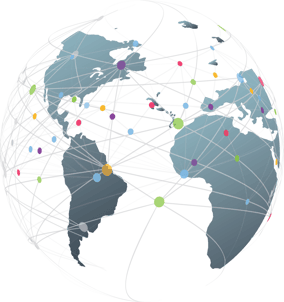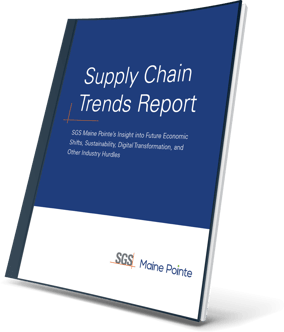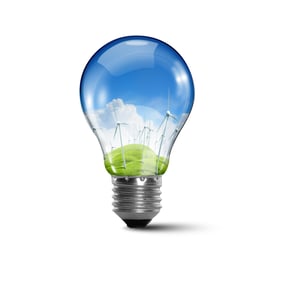Forecasting Consumer Demand Ahead of the Curve
Most of the advice about demand forecasting focuses on using past behavior to predict future behavior. But past behavior is becoming less and less relevant to future behavior. Consumer goods and retail (CG&R) customers and business-to-business (B2B) customers are pivoting more frequently because they:
- Conduct more types of research in more venues: personal connections, social media, websites, ads, articles, and more.
- Buy in more ways: digital, mobile, and brick-and-mortar.
- Expect a personalized experience all along the purchasing path, from initial inquiry to daily use.
So how do you forecast consumer demand ahead of the curve?
All too often, companies head straight for technology solutions without first determining that they have the right data and the processes in place to forecast demand accurately and quickly. With the right processes, data, and technology, you begin to plan for the future rather than catching up with the past.
Buyer Preferences
| CG&R Buyers | B2B Buyers |
|---|---|
| Research Before Purchase (53%) | Research Before Contacting Sales (57%-70%) |
| Use Personal Recommendations (51%) | Use Referrals (84%) |
| Seek Information in Paid Search Ad, Then Phone (37%) | Seek Informative Article (80%) |
| Use Online Shopping (75%) | Use Digital Commerce (65%) |
| Expect Personalized Purchasing Experience (40%) | Expect Personalized Purchasing Experience (66%) |
| Consider Price (87%) | Consider Quality (69%) |
Sources: www.statistica.com; www.zippia.com; https://www.marketingcharts.com; www.wbresearch.com; www.invoca.com; https://www.thinkwithgoogle.com; www.spaceworks.com
Data
You need trustworthy data—without it, predictions are merely guesswork. Gathering trustworthy data requires communication up and down your supply chain:
- Collaboration with suppliers: what do they see on the horizon?
- Feedback from customers: what are they looking for?
- Clear goals and metrics: how much demand are you prepared for and how will you know when you achieve it?
- Collaboration between procurement, operations, and logistics: do they recognize how upstream decisions affect downstream productivity and vice versa?
Do you know where to find the data you need? Is it accessible in a form the C-suite and various function leaders can use? Do you know what additional data you should have?
Processes
Sales, inventory, and operations planning (SIOP) makes end-to-end supply chain collaboration a reality by bringing together key leaders from finance, operations, marketing, sales, procurement, and logistics to share information. They meet at least monthly to make decisions and recommendations within established rules, taking into consideration KPIs, costs, inventory, and C-suite goals. Their purview includes forecast and demand planning, supply and capacity inventory planning, and sales order processing, among other concerns.
With a fully functional SIOP process, fewer decisions are elevated up, disruptions and fire-fighting decrease, and relevant data can be separated from noise. Again, for SIOP to succeed, silos must come down and collaboration must increase.
Leadership and organizational improvement (LOI) changes perspective across the plan-buy-make-move supply chain. It ensures collaboration and weaves SIOP into the daily practice of the organization. Because everyone has clear accountability and a clear role, and because no key leader is excluded from the decision making table, upstream decisions are far less likely to cause downstream chaos and vice versa.
Network design and footprint optimization coupled with operations excellence prepares your operations for shifts in demand at the lowest cost and with the optimum number and placement of people, equipment, and resources. Capacity optimization, asset utilization, and yield and waste management all help you adapt more quickly to changing demand.
In a case study, a supplier of food ingredients decided to open a second facility to raise productivity; but they had crippling demurrage charges from cancelled and returned orders and a lack of visibility into the data that would tell them how to turn the situation around. With an improved order entry and confirmation process, new SIOP and management operating system, and improved communications, they improved demand planning and increased throughput at both facilities, 275 percent at the first and 135 percent at the second.
Technology
Once you have accurate data coming in and have a process that ensure continuity, you are faced with the problem of accessing the data in a form that allows for demand forecasting and decision making.
For example, a procurement organization in the food industry processed its invoices manually. To find out why vendors and members were deserting them, they had to extract information buried in 365,000 line items in three years of invoices. The use of deep learning AI quickly converted current and future invoices into structured data fields with usable text that was then displayed on an executive dashboard.
The data clearly identified profit drivers, provided insight into member behavior, and drove a 7 percent growth in group volume, with a 20 percent EBITDA improvement. Because the AI kept pace with incoming invoices, it also gave the organization visibility into behavior as it happened, for accurate demand forecasting and data driven decision making.
The right technology for your demand forecasting may range from IoT sensors that provide point of sale data to sophisticated demand planning software. But all of them require that you have the right data and the right processes to ensure an outcome you can use and enable you to forecast consumer demand ahead of the curve.
Related Resources
Ready to improve your consumer demand forecasting?

Talk to us
From rapid sprints for short-term gains to transformation for competitive advantage we are here to get you there.
Schedule a discussion
Submit this form to speak to an SGS Maine Pointe representative.
Prefer a call? (781) 934 - 5569




